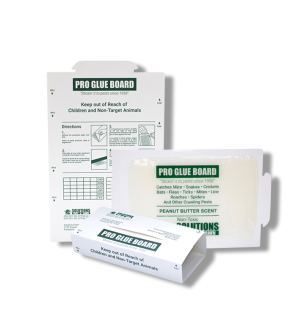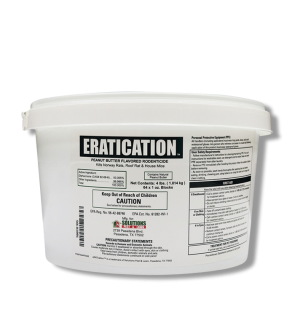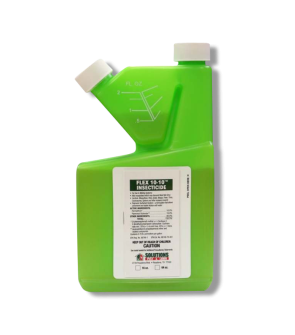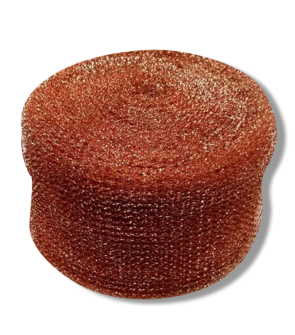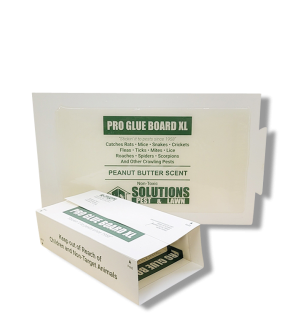Rat Mite Control
Most Effective Products
Rat Mite Control: How to Get Rid of Rat Mites
This page is an expert guide on getting rid of rat mites in your home using the products and methods suggested by our experienced pest control specialists. Follow this guide and use the recommended products and we guarantee you will be successful in eliminating rat mites from your home.
Rat mites are tiny parasitic mites that like to live on rats and feast on their blood. They go where rats go, they breed where rats breed and they may happen to trespass upon your home or place of business. So basically, you would be dealing with two pests at a time.
Rat mites (or rodent mites) are scientifically named as Ornithonyssus bacoti, and are one of the most common house invading species. Rat mites are small arachnids, and you will likely not realize there is an infestation until after you have been bitten. The most common rat mite is the tropical rat mite. These pests really become a problem after a rat has been controlled via trap or poison. Once their host is dead, rat mites go looking for a new host and often if they are inside a human dwelling, will make a host out of us with their itchy bites.
Rat mites are capable of surviving for long stretches of time without a host and will travel several hundred feet in search of a new host. If you are suffering from itchy bites from rat mites, you more than likely have a rat problem and will have to deal with both for relief. Follow the expert advice and recommendations below to learn how you can control a Rat Mite infestation.
Identification
Before you can proceed with a treatment approach, you need to be sure that the pest you are dealing with is a rat mites and not some other insect. Misidentification can lead to using the wrong treatment methods and products, which can end up being a waste of time and money. Here are the some identifying characteristics of rat mites:

- Rat mites are normally about 1/25 of an inch in length and hard to see with the naked eye, but they become more visible after they fed. They are typically grayish-white in color, and they become reddish after feeding.
- Much like other arachnids, they have 8 legs and pierce sucking mouthpart.
- Their bites are pretty irritating and are comparable to bed bug bites. They bite at one area several times so the entire body part will be covered with small red lesions by the time they are done. Their bite itches for up to six days, and the size of the bite is so large that they become obviously visible. It can take up to three weeks for bites to heal.
Use the description and image above to help you properly identify the rat mites on your property. If you are not sure, contact us and we will try to assist you in getting the correct identification of your problem pest.
Inspection
Once you have confirmed that you are dealing with rat mites, you can move on to inspection. During this phase, you will need to find out where the rat mites are located and the places they are infesting. This will help you in determining where to focus your treatment application.

Where To Look
If you have rat mites, you either brought in a new pet that may have been infested (maybe a hamster or another similar animal) or you have a rodent infestation. Look in and around your house for signs of rat or mouse activity. Check outdoors around your home’s perimeter, in garden beds, or indoors like the kitchen, pantry, attic, basement, or garage.
What To Look For
Look for rat mites themselves or in some cases, rats because these two pests almost come hand in hand. If you have rats, you can safely assume rat mites will be present and vice versa. Look around for grease marks along walls, fur, rodent droppings, gnaw marks, and rodent burrows.
Treatment
If you have a rat mite infestation, you will first need to address any rodent infestations on your property. Before starting any treatment, be sure to wear the proper personal protective equipment (PPE). We recommend you wear gloves in order to keep your human scent off any products.
Step 1: Place Snap Traps

Start control by setting up snap traps. We recommend you use Easy Set Rat Traps. Easy Set Rat Traps are durable and reusable traps designed to be safe to use and to eliminate rats quickly. Bait these traps with a high protein bait like peanut butter, then arm and set traps against walls or fence-lines close to where activity’s been seen. The trap should be perpendicular, facing towards the wall.
Step 2: Set-up Rodent Glue Traps

Next, set up glue traps. We recommend you use our pro glue boards, perfect for rats and other crawling pests. These traps come pre-baited with a peanut-butter adhesive, and are easy to set up.
To prepare the glue boards, just grip the corner of the board itself and the paper seal, then swiftly pull them apart. These these traps lengthwise against walls or fence lines close to where you’ve seen rodent activity.
For the best coverage, use plenty of traps, and be sure to place snap and glue traps 2 to 3 feet apart throughout your treatment area.
Step 3: Apply Eratication Rodenticide Bait

In addition to traps, you will want to use a rodenticide bait like Eratication Rodent Bait. Eratication Rodent Bait is a slow-killing rodenticide that prevents a rodent population from developing bait shyness.
To prevent children, pets, and non-target animals from accessing the bait, set up Eratication Rodent Bait in a tamper-proof bait station like the Solutions Rat and Mouse Bait Station.
Load the station with up to 4 Eratication Rodent Bait blocks, and set the station flush against the exterior of your home’s structure. We recommend you set up multiple stations 20 to 40 feet apart. Check the stations once a day to replenish any bait until rodent activity ceases.
Step 4: Apply Flex 10-10

Finally, to get rid of any lingering rat mites that may persist after rodents have been controlled, we recommend you treat in and around your home with an insecticide like Flex 10-10. Flex 10-10 is a a permethrin and piperonyl butoxide-based concentrate that is labeled to kill rat mites in and around your home. This product must be mixed with water before application.
Determine how much product to use by measuring the square footage of the treatment area. To do this, measure the length and width in feet then multiply together (length X width = square footage). In a handheld pump sprayer, mix 3.2 fluid ounces of Flex 10-10 into 1 gallon of water to treat up to 1,000 square feet of treatment area.
You can apply this solution to furniture, mattresses, baseboards, carpeting, and shelves. You should also create a perimeter barrier around your home’s exterior to prevent mites and other bugs from coming in from outside.
Prevention
After you have treated your home and addressed the rat mite infestation, you will want to be sure that these pests are not a problem for you in the future. Apply the following preventative measures to keep them at bay.

- Prevent rats from entering your home by cleaning in and around it to remove food sources and haborages. Seal loose foods like cereal, flour, and pet foods into air tight containers. Rake away leaf litter and pick up fallen debris, and ensure your garbage bins seal completely.
- Keep your pets washed and shampooed often so that no lingering mite is left in their coats.
- Regularly wash and heat treat your bedsheets, clothing and any other fabrics to make sure Rat Mites have been wiped off of them.
- Make a point of sealing all holes, cracks, and crevices in and around your house. Do this with caulk or copper mesh. Rats do not like copper mesh, so they will not be able to chew through it. These openings and entry points invite rats, which later on causes rat mites.
- Finally, keep up with monthly treatments of Flex 10-10 outdoors to control and prevent rat mites and other pests from entering your home.
Key Takeaways
What are Rat Mites?
- Rat Mites are parasitic insects that often host and feed on rats but can also be a problem for humans with their irritating bites.
How To Get Rid of Rat Mites
- To get rid of rat mites you will need to address invading rat issues by applying snap traps, glue traps, rodnent bait, and the use of Flex 10-10 Insecticide to kill any rat mites that have settled into your property.
Preventing Rat Mite Reinfestation
- Prevent the return of rat mites by keeping up with sanitation, exclusion by sealing off holes and points of entry with caulk and applying a preventative treatment of Flex 10-10.

